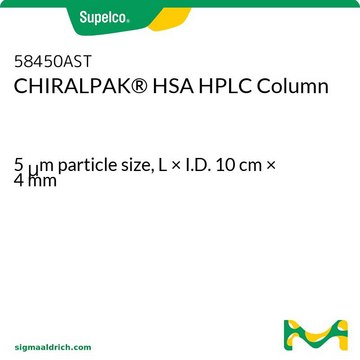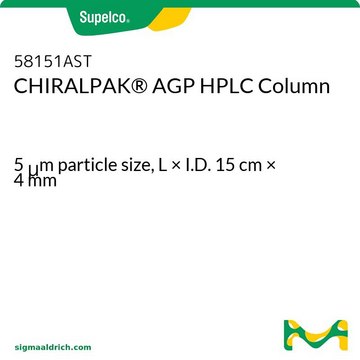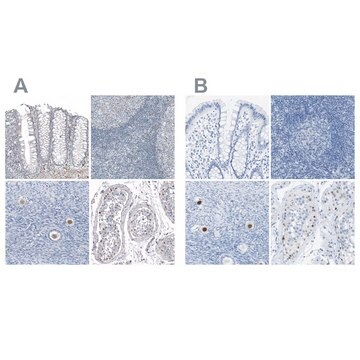58430AST
CHIRALPAK® HSA (5 μm) HPLC Columns
L × I.D. 10 cm × 2.1 mm, HPLC Column
About This Item
Recommended Products
Product Name
CHIRALPAK® HSA HPLC Column, 5 μm particle size, L × I.D. 10 cm × 2.1 mm
material
stainless steel column
Agency
suitable for USP L79
product line
CHIRALPAK®
packaging
pkg of 1 ea
manufacturer/tradename
CHIRALPAK®
parameter
137 bar pressure (2000 psi)
20-30 °C temperature
40 °C max. temp.
technique(s)
HPLC: suitable
L × I.D.
10 cm × 2.1 mm
matrix
fully porous particle
matrix active group
human serum albumin phase
particle size
5 μm
operating pH
2-8
separation technique
chiral
Looking for similar products? Visit Product Comparison Guide
General description
k = (tr - t0)/tr
to calculate the % protein binding (P):
P = 100k/(k+1)
Different types of mobile phases can be used. A mobile phase consisting of 6% 2-propanol in 20 mM potassium phosphate buffer, pH 7.0 gives data in good agreement with literature data. The mobile phase conditions should be chosen to suit the drugs to be tested, i.e., for high protein binding drugs a mobile phase with higher eluting strength might be needed in order to reduce retention times.
(1) Goodman, A.; Gilman, A.G. The Pharmacological Basis of Therapeutics, 9th Edition, McGraw-Hill: New York, 1996; pp 1712-1792.
Legal Information
Choose from one of the most recent versions:
Certificates of Analysis (COA)
It looks like we've run into a problem, but you can still download Certificates of Analysis from our Documents section.
If you need assistance, please contact Customer Support.
Already Own This Product?
Find documentation for the products that you have recently purchased in the Document Library.
Our team of scientists has experience in all areas of research including Life Science, Material Science, Chemical Synthesis, Chromatography, Analytical and many others.
Contact Technical Service








